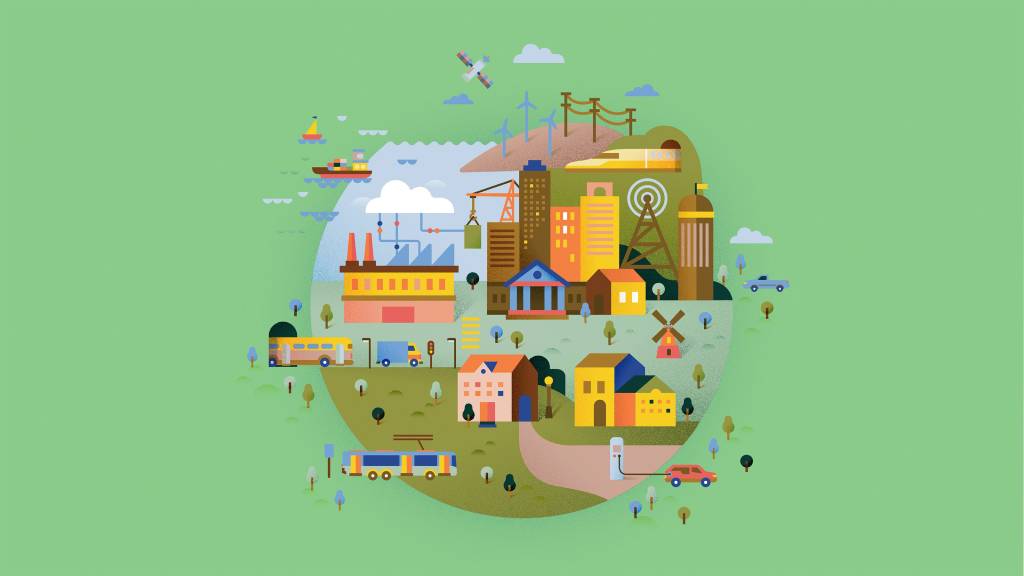The Future of Innovation in Europe
A conversation with EY’s Marc Lhermitte
Nine months. That’s how far ahead Shenzhen, China is compared to the rest of the world when it comes to developing new products, according to a WIRED Magazine report on the world’s capital for hardware entrepreneurs. Full of makers and hackers with a focus on making affordable solutions for the masses, companies across the globe flock to Shenzhen to learn and create for a fraction of the time and cost to do it anywhere else.
$3.5 trillion. That’s the market cap for Silicon Valley—how much the market says its collective stock shares are worth—which is the highest it’s been in over a decade. It’s no surprise that the area, rich in tech startups and innovation, is drawing more bets for the future. “Silicon Valley has its ups and downs, but it’s one of the most resourceful areas of the world, that continues to reinvent itself,” notes research firm Creative Strategies.
Shenzhen and Silicon Valley are two of the best known locations for innovation in the world. Leading organizations in Europe are determined to join their ranks, and according to Marc Lhermitte, a partner at EY who leads the firm’s study on European attractiveness to investors, despite some challenges, the future of innovation in Europe is bright.

360: EY recently published their 2017 European attractiveness survey. Were there any big surprises?
ML: Surprisingly for many observers, Europe remains attractive for investors and entrepreneurs. Entrepreneurs and companies are giving Europe a big vote of confidence for its capacity for growth in the world. Europe is a very stable, very compact, very well equipped region compared to other regions of the world, to flourish.
360: Last year Europe experienced a record year in terms of direct foreign investment. What are the conditions or drivers that allow innovation to flourish and draw investors to Europe?
ML: Europe is not only the European Union. It’s 40 plus countries. The diversity of Europe is probably one of its biggest differentiators and strengths. The incredible number of market situations, technologies, the number of universities, diverse cultures, all contribute to the incredible strength of Europe. That’s what companies tell us. They value the ability to tap into a mosaic of situations and talents and skills.
360: You’ve also written that Europe’s strengths are its digital and logistical infrastructure, along with its skilled labor force. With all these strengths, what are the challenges that impede innovation?
ML: The drawback of diversity is dispersion. It makes it very difficult to create world-class research and innovation centers of critical size. It’s very difficult to create or develop a financial system, which is an essential condition for helping entrepreneurship and innovation.
Restructuring is what Europe needs, especially when it comes to tax regimes and business models. The current systems may have worked in previous eras focused on efficiency and productivity, but the business landscape of tomorrow requires innovation that allows risk, fast funding and change. Innovation is about creativity, but also it’s about resources and process. In some countries and geographies of Europe we also lack the process, the discipline that it takes to go from advanced research science to applied research and then into the markets.
“Innovation is about creativity but also it’s about resources and process.”
Marc Lhermitte EY Partner Paris, France
360: But despite these challenges, many areas of Europe are becoming creative hubs. Which cities or geographical areas do you believe have created the best conditions to support innovation?
ML: There are probably 15 to 20 world-class urban areas in Europe and they all have their own traction, their own weight and their own capacity to attract and develop and retain investors, entrepreneurs, students, skilled talent, media—all the elements that foster entrepreneurship and innovation. But it’s important to realize innovation cannot be summed up solely to creativity. You also need to consider process, organization, structure, discipline, resources and have a long term commitment by the private and public sectors.

360: Can you give us an example of organizations or specific business sectors you believe are doing it well in Europe?
ML: There are many companies and startups that have proven that Europe, despite lagging in consumer IT, is a leader in many emerging digital technologies including very important fields like artificial intelligence, robotics and IoT. I think there are many leaders in the smart cities ecosystems, transportation, energy and offering new services to citizens. It’s hard to name companies and startups because it’s a dual army of entrepreneurs, the big and the emerging, with government and universities that create the formula for innovation.
360: How does a company that is accustomed to running the same routine for decades shift their mindset radically enough to keep up with the changing pace of business today?
ML: Companies should be thinking about how to reorganize their business models and scan for opportunities. They are at the forefront of entrepreneurship and they should be asking questions like, “How do we empower our people, our staff to encourage innovation on a day-to-day basis?”, to develop open innovation, to understand that life tomorrow is different than business as usual. It’s complex, it’s probably even more complex in Europe. I’m very confident that together companies and governments can make it happen.
360: How do you see 2018 and the years to come for Europe?
ML: Overall, it’s a positive outlook and I’m confident that Europe can remain attractive and competitive. When you combine all the markets and the population in Europe, it is the number one economy in the world. It has great opportunity and I’m very confident about the prospects for growth. I think we’ll have more growth in 2018 than we had in the past five years. Foreign investment in Europe will continue to rise, creating jobs, but also there are big changes and restructuring in old and traditional industries that will carry on.
The diversity of Europe is one of its biggest differentiators and strengths.
Marc Lhermitte
Just as EY’s Marc Lhermitte suggests, several companies in Europe are looking for new ways to ignite innovation:
BMW’s Innovation Lab in the United Kingdom invites successful startups for first-class mentorship by learning from leading subject matter experts in the automotive and automotive finance sectors. Participants are able to access data, gather insights and test their products and services in live customer environments.
The Accenture Innovation Center in Paris helps clients “imagine and invent” their futures. Companies get personalized innovation paths with coaching from leaders in departments across the company by using design thinking to envision their future.
Silicon Allee in Berlin is a startup campus named with a comical nod to the Californian innovation hotspot. It is composed of an ecosystem of spaces for working, meeting and socializing.
Station F, the 34,000 square meter co-working space in Paris is the world’s largest startup campus. It can hold up to one thousand startups and provides a makerspace with advanced prototyping technology.
IKEA’s SPACE10 in Denmark focuses on circular societies, coexistence between people and the environment and digital empowerment. On a mission to explore and design new ways of living, SPACE10 invites people from the worlds of art, design and technology to create together.


